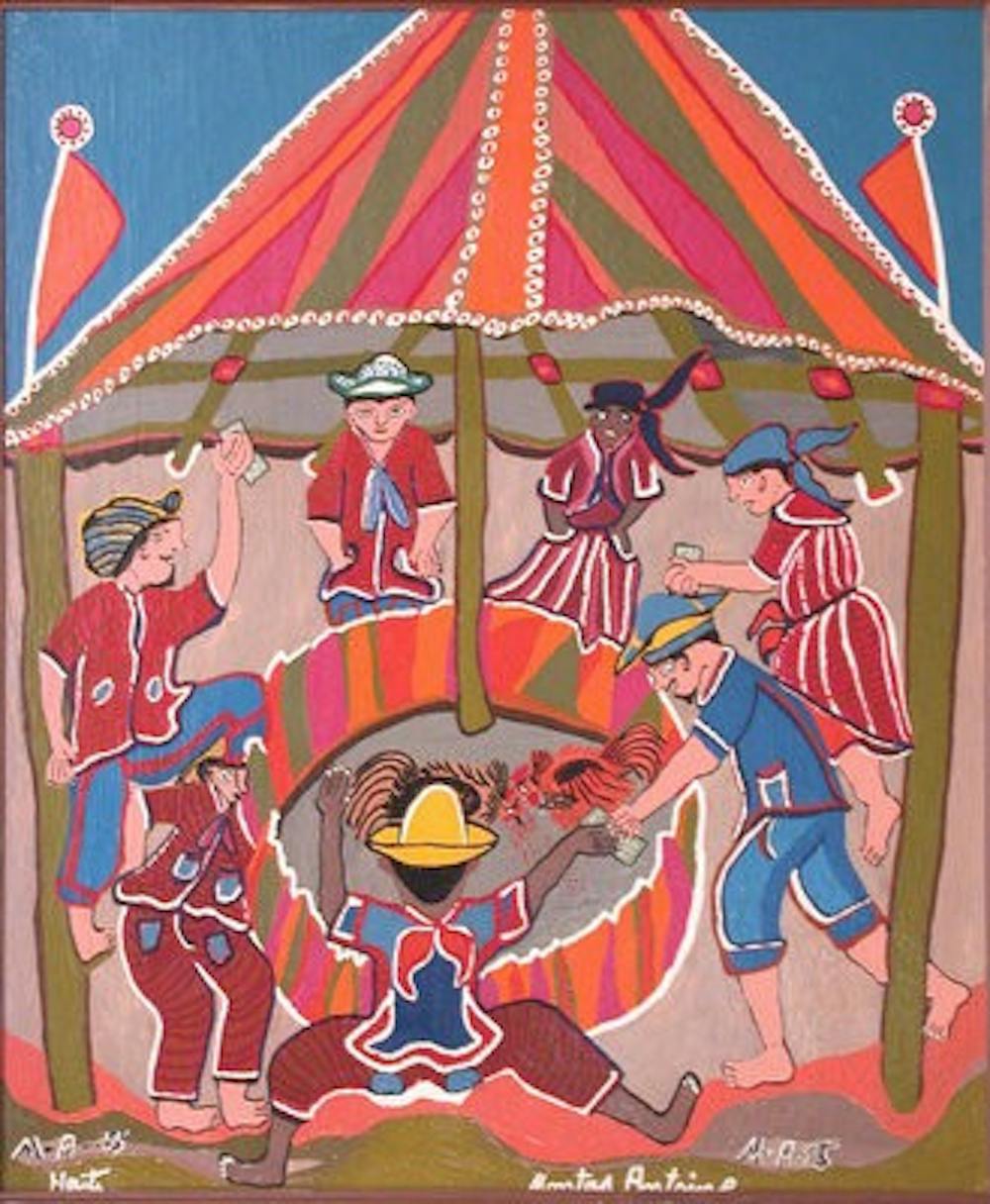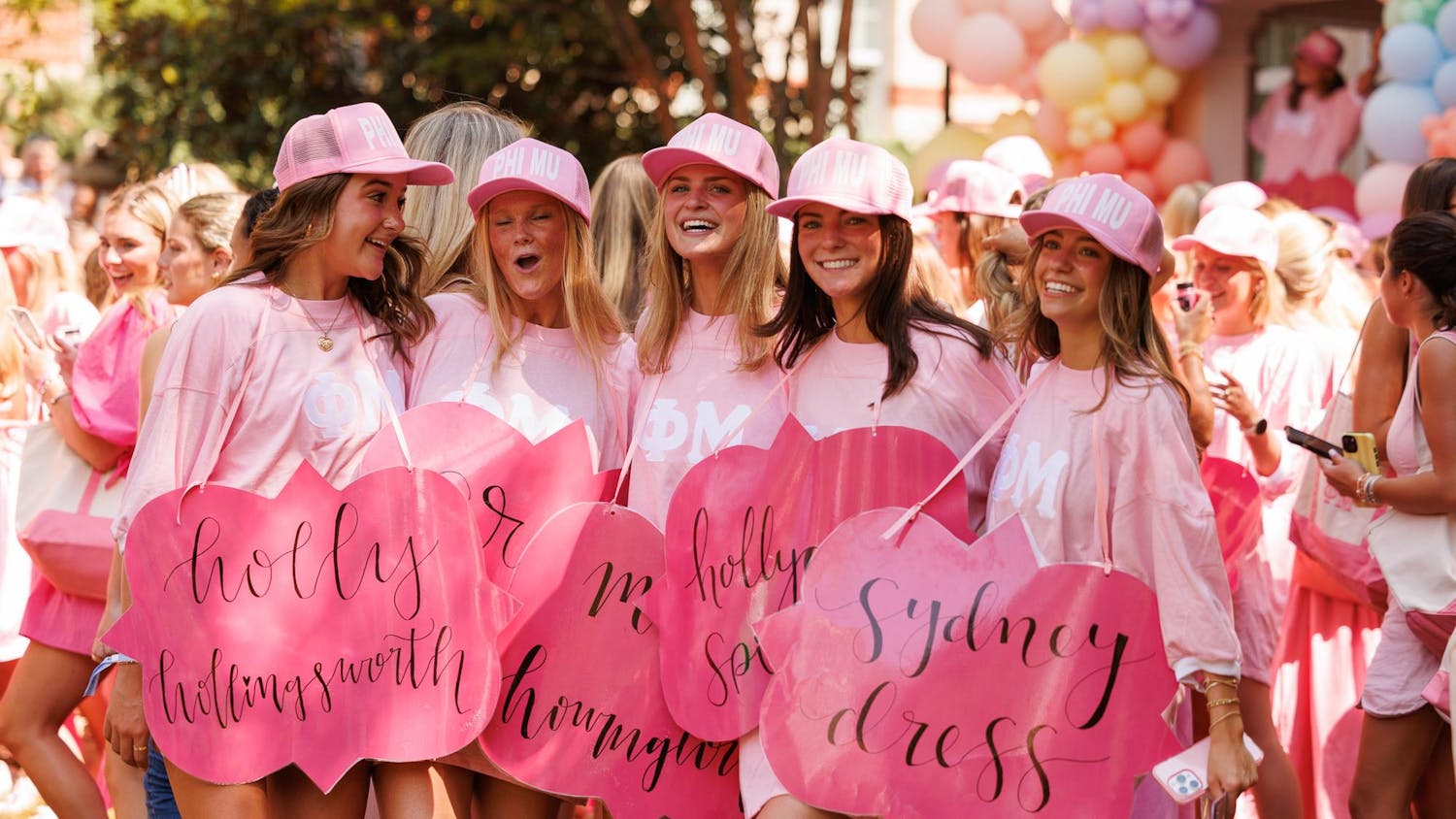Dancing monkeys and villagers plowing bountiful fields are not the usual images associated with Haiti.
Ever since the Jan. 12, 2010, earthquake, it's easy to think of Haiti as a shattered society, but the Jule Collins Smith Museum of Fine Art and the Auburn Connects! Common Book Program desire to change this perception by displaying a gallery of Haitian paintings, which opened Saturday.
"Haiti is very close to us geographically, and I think it's important to understand the cultures and the histories of our neighbors," said Constance Relihan, associate provost of undergraduate studies. "We all need to be globally aware."
Relihan is one of the founders of the Auburn Connects! Common Book Program.
This year's book, "Mountains Beyond Mountains: The Quest of Dr. Paul Farmer, A Man Who Could Cure the World" by Tracy Kidder, concentrates on Haiti and one man's efforts to make a difference.
Relihan said students who are assigned to read the book during class or are participating in the program will experience a new way of reading after seeing the exhibit.
Lespri Endonptabl, or "The Indomitable Spirit," is an exhibition of paintings and sculptures from Haiti from1945 to 1990.
The collection is being borrowed from the Huntington Museum of Art in West Virginia.
"If you think about the earthquake aftermath of Haiti, what you often see is images of people in trouble, people in poverty, people in difficulty, and it's good to be reminded that any culture is much more than its current economic situation," Relihan said.
Karissa Womack, junior in English, participated in setting up the exhibit as part of her internship at the museum. She said she thinks the vivid colors and expressions of joy will mend the disconnect students have with Haiti.
"Despite whatever personal tragedies and things of that nature that the peasantry actually live in ... it's joyful, and it's beautiful, and it's happy," Womack said.
Womack attributes the happiness and inspiration Haitians have to the local religion of Vodou, a combination of island religion and Catholicism.
A large part of the exhibit was designed to teach visitors about Vodou's vital role in Haitian identity.
Other works, Womack said, allow students to imagine what Haiti was like before the earthquake.
The Cathedral of Our Lady of the Assumption in the Hatian capital of Port-au-Prince was destroyed in the disaster, but lives on in oil paint.
Volunteers like Charlotte Laroux are available to take visitors on a tour of the exhibit. Laroux said she thinks she has been awarded a great opportunity.
"I immediately loved (the exhibit)," Laroux said. "It's such a rare opportunity to see art from Haiti."
Laroux, like Relihan and Womack, said the exhibit was fascinating in the context of the disaster.
Lespri Endonptabl will be featured at the JCSM until Oct. 29.
Do you like this story? The Plainsman doesn't accept money from tuition or student fees, and we don't charge a subscription fee. But you can donate to support The Plainsman.





